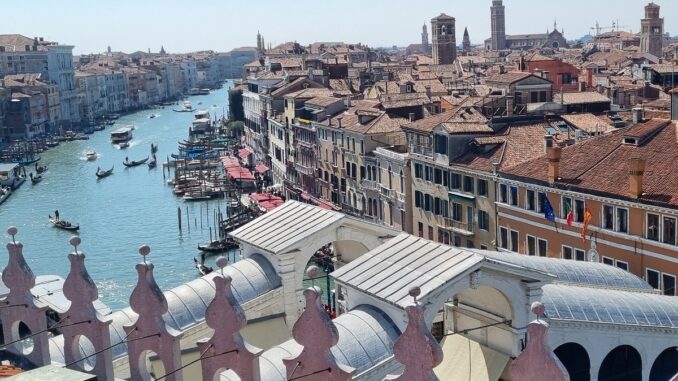
Mark Nicholls heads to Italy for stunning views across Venice and the mountain resort of Cortina d’Ampezzo in the Dolomites.
Either side of the Grand Canal, palatial buildings stand proud against the lapping waters.
Within this red-tiled panorama sit the domes and spires of Venice’s numerous churches, while front and centre is the spectacle of the Rialto Bridge linking the districts of San Polo and San Marco.
This vista, arguably the best in Venice, is from the rooftop of the Fondaco dei Tedeschi (FdT) and showcases the city in a wonderful 360-degree panorama.
Rooftop splendour
The FdT itself is a building steeped in history, dating originally from the 13th century as the headquarters of German merchants in the city. Now occupied by a luxury retailer, it is accessed through a discreet doorway and opens into a soaring atrium around which are lined boutiques and small outlets selling interesting artifacts and souvenirs as well as clothes, handbags and watches.
For the splendid view, clamber up four flights of stairs or take the elevator to the rooftop. The experience is free but must be booked in advance for a 15-minute slot, though if there was ever a ‘15-minutes-of-fame’ for Venice, this is it.
Value every second as you digest the city before you, picking out the landmarks of Piazza San Marco and the Cathedral, the Campanile, the Basilica dei Santi Giovanni e Paulo, the bell tower of Madonna dell’Orto in Cannaregio in the distance and the islands around Venice beyond.
Follow the major arteries and get your bearings as you watch gondolas bob below on the Grand Canal, rocking and swaying in the wash of water taxis and service vessels.
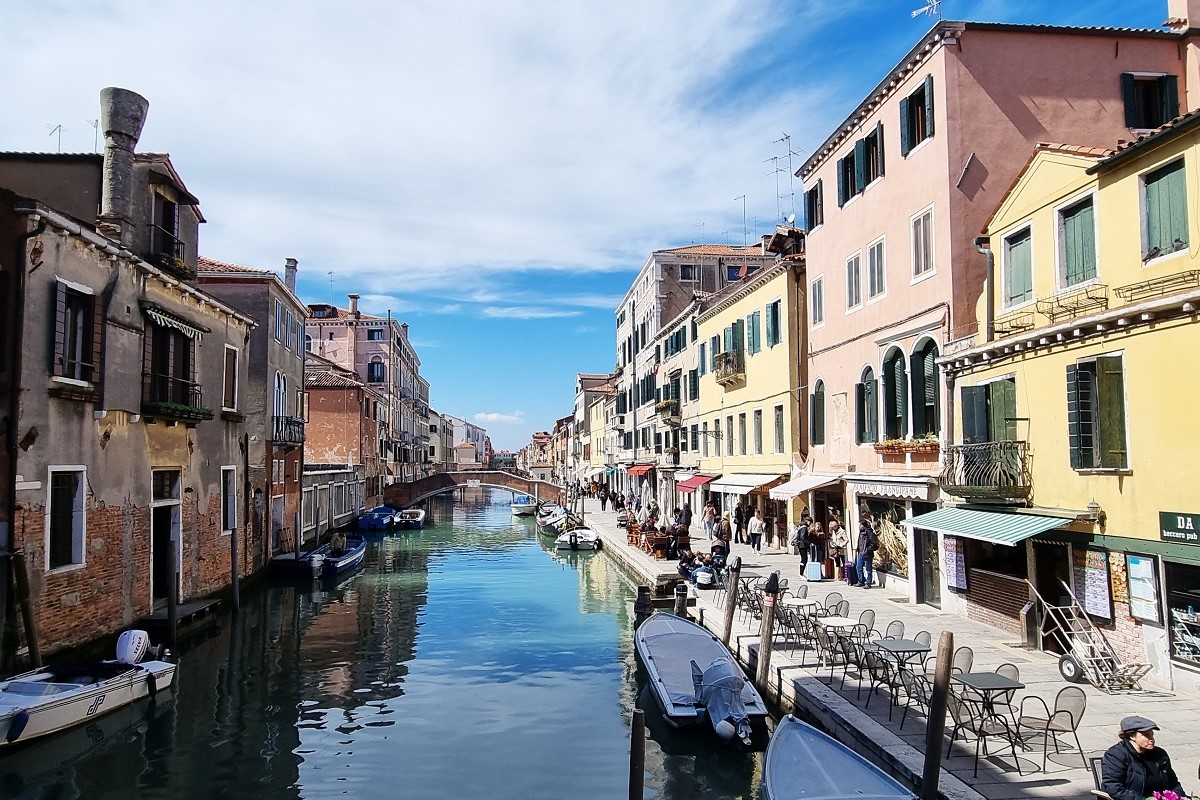
Boutique hotels
While famously set on water, exploring Venice’s narrow thoroughfares beside the smaller canals on foot is the way to absorb its ambience.
These routes will take you to the Piazza San Marco or into squares such as the Campo Santo Stefano and its bars and restaurants, or equally away from the hubbub and into the quieter quarters of Cannaregio, where you’ll find wonderful cafés and eateries, empty churches and boutique hotels created from converted palazzo, the former homes of wealthy merchants.
These by themselves are worthy of exploration, retaining mosaic floors and frescoes. You can see examples of these in hotels such as the Heureka on the outer canals of Cannaregio or the Palazzo Nani.
Palazzo Nani
With 52 rooms of individual style and character, the Palazzo Nani is ideally placed to explore the city.
The hotel overlooks the Cannaregio canal to the fore, but as with several such residences in this part of Venice, it enjoys the benefits of a small garden and terrace. Indeed, look closely through the hotel and you’ll see a gondola ‘parked’ at the rear.
The restaurant and bar are lovingly illuminated, with carefully selected furnishings and décor and the ambience in the mornings for breakfast is just so relaxed and comfortable.
Built in the 16th century for the Nani family, who were engaged in the political, social, and cultural life of the city, the building was used by the Austrian army in the 19th century and was a school since 1934 before the conversion into a five-star hotel was completed in August 2021.
During that process, special attention was given to the preservation and restoration of the ornamental elements, and the stuccos and paintings on the walls and ceilings, with many attributed to the Italian sculptor Alessandro Vittoria, who remodeled the palazzo in the 1680s.
Today, they add to the sense of history you experience when staying at the hotel.
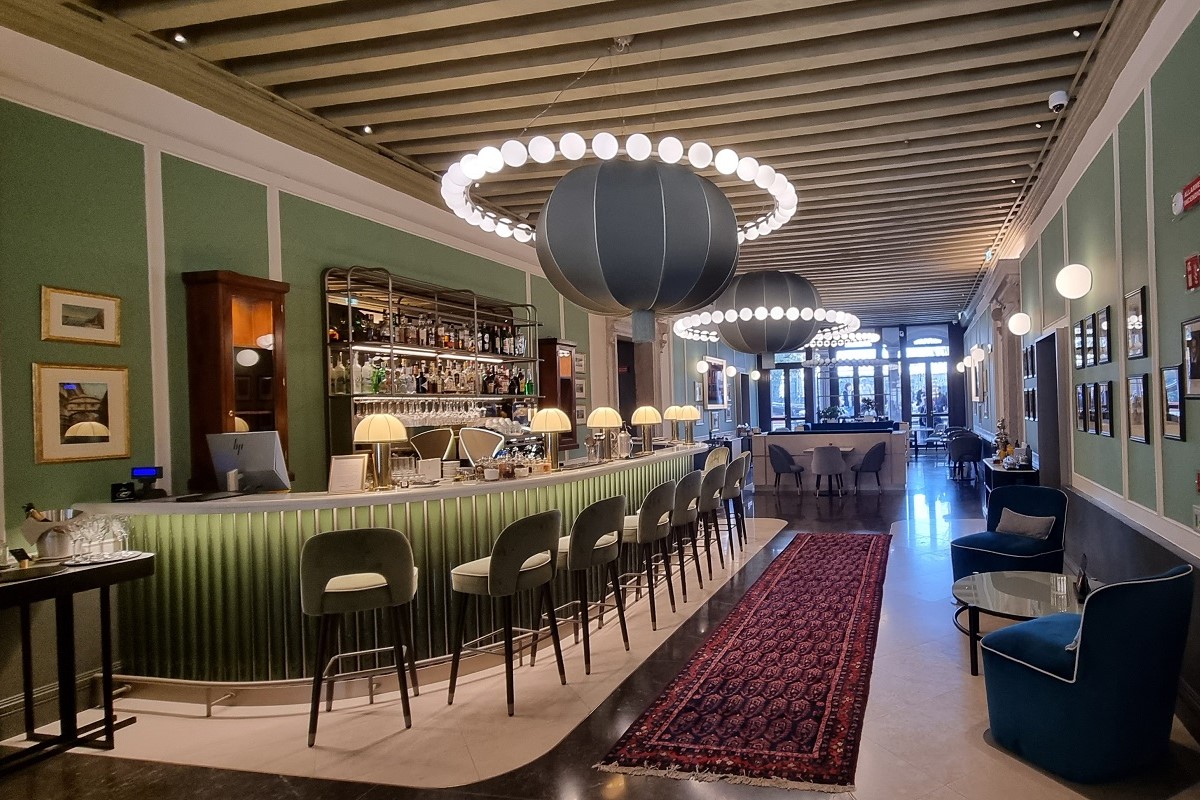
Tintoretto masterpieces
With easy access to the main arteries and an enjoyable walk to the waterfront, Palazzo Nani is also a good starting point to explore off-the-beaten-track Venice.
As you leave the hotel and follow the smaller passageways, they will lead you through residential areas into the Jewish quarter (Campo di Ghetto Nuovo) and deep into Cannaregio and to churches such as the Madonna dell ‘Orto which contains masterpieces by the artist Tintoretto.
For a mere three euros, you have uninterrupted views of an interior that hosts the works of the 16th century Venetian school artist who is also buried in the church.
Tintoretto’s paintings are on a grand scale around the altar and inside chapels. While you will see his work elsewhere in Venice, his depiction of the Worship of the Golden Calf and the Last Judgement in Madonna dell’Orto are the largest paintings of the Renaissance period at 14.5m high.
Cannaregio offers another façade of Venice that is as intriguing as the main tourist hotspots of the Bridge of Sighs, the Doge’s Palace, St Mark’s Basilica and the Campanile.
Tessitura Luigi Bevilacqua
Just being there is inspiring as you follow your nose through this labyrinthine city. And there is always a surprise awaiting you.
The weaving mill of Tessitura Luigi Bevilacqua is such an experience. Here, the finest textiles and fabrics for furnishings and wall hangings for the grandest homes across Europe and elsewhere in the world are woven by hand on looms dating from the 18th and 19th century.
You can make an appointment to watch the rich fabric being created, and then find your way there either by winding your way through the alleys to a discreet side entrance in the Santa Croce district or by boat at the opening onto the Grand Canal.
Inside, all the equipment and techniques are original, with the skilled weavers, meticulously producing a mere few centimetres of exquisite cloth a day. It comes as no surprise to learn that the velvet patterned material costs from €1,500 to €5,000 a metre.
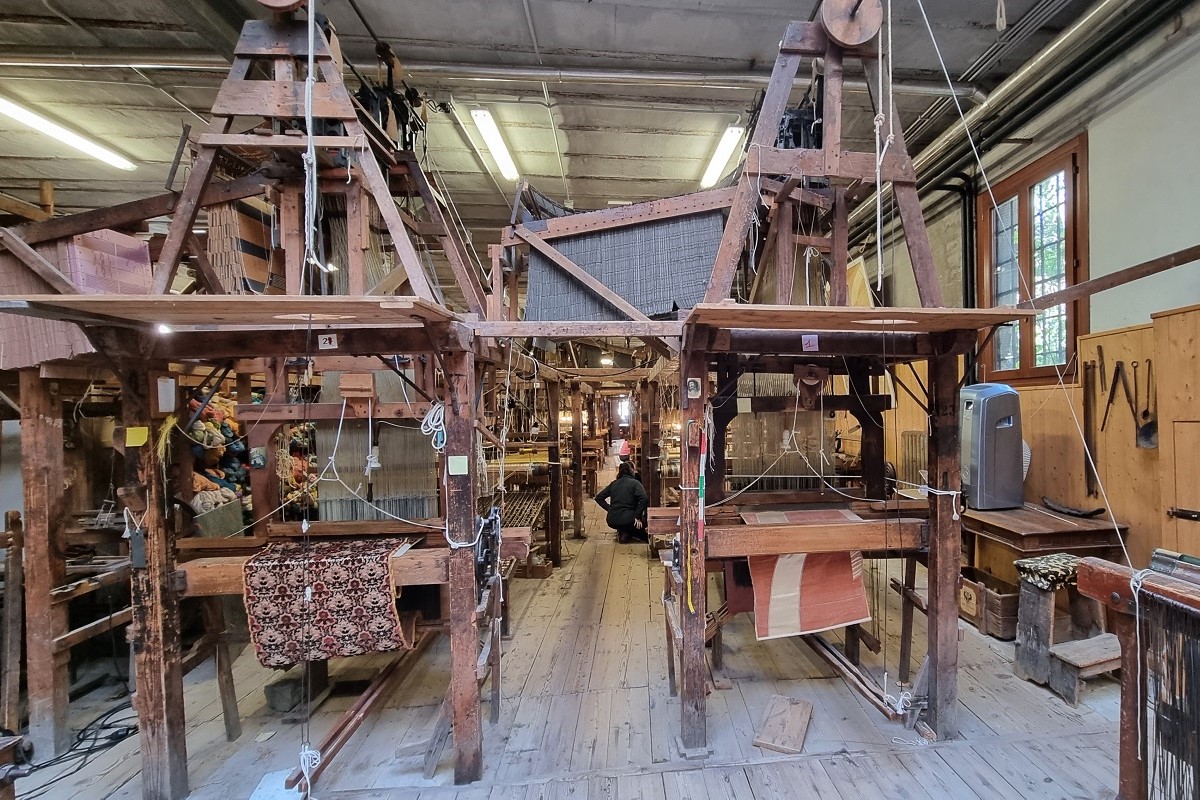
Perfume masterclass
Similarly, the Merchant of Venice perfumery is another craft closely linked to Venice over the centuries.
Tucked away behind St Mark’s Cathedral and above a bookshop is the Libreria Studium, where you can gain a fascinating insight into the history of perfume making.
From the early skills of the ancient Egyptians and Arabian perfumers, through to modern day techniques, you can discover how legend suggests “perfume has played a role at important moments in history.”
Perfume expert Joan Giacomin is our guide through that historical landscape, highlighting different scents and the base, middle and top ‘notes’ of fragrances, in a fascinating perfumery masterclass.
However, as she points out: “While the nose smells, it is the brain which really does the work.”
This is a special experience where you not only learn about the origins of perfume and how combinations of aromas are skilfully brought together, but you also have the chance to design your own scent.
At the end of the two hour masterclass, participants are invited to pick out favourite aromas, which Joan expertly assesses, creating a ‘recipe’ for participants to create their own perfume.
We left enthralled, and with a miniature bottle of our own exclusive scent.
Mountain retreat
I had arrived in Venice after spending a couple of days surrounded by the mountains of the Dolomites at Cortina d’Ampezzo, staying at the five-star Grand Hotel Savoia, which reopens for the summer season on 13th June.
With wonderful views in every direction, it has 132 rooms and suites, a fine-dining restaurant and the 1224 Bar – acknowledging the altitude of the location.
The hotel has been a landmark establishment in Cortina d’Ampezzo since 1912, in a region rich in geographical and political history.
Fought over during World War I and involved in the campaigns of World War II, the Dolomites have more recently been designated a UNESCO World Heritage Site.
For decades it has been a summer and winter activity centre.
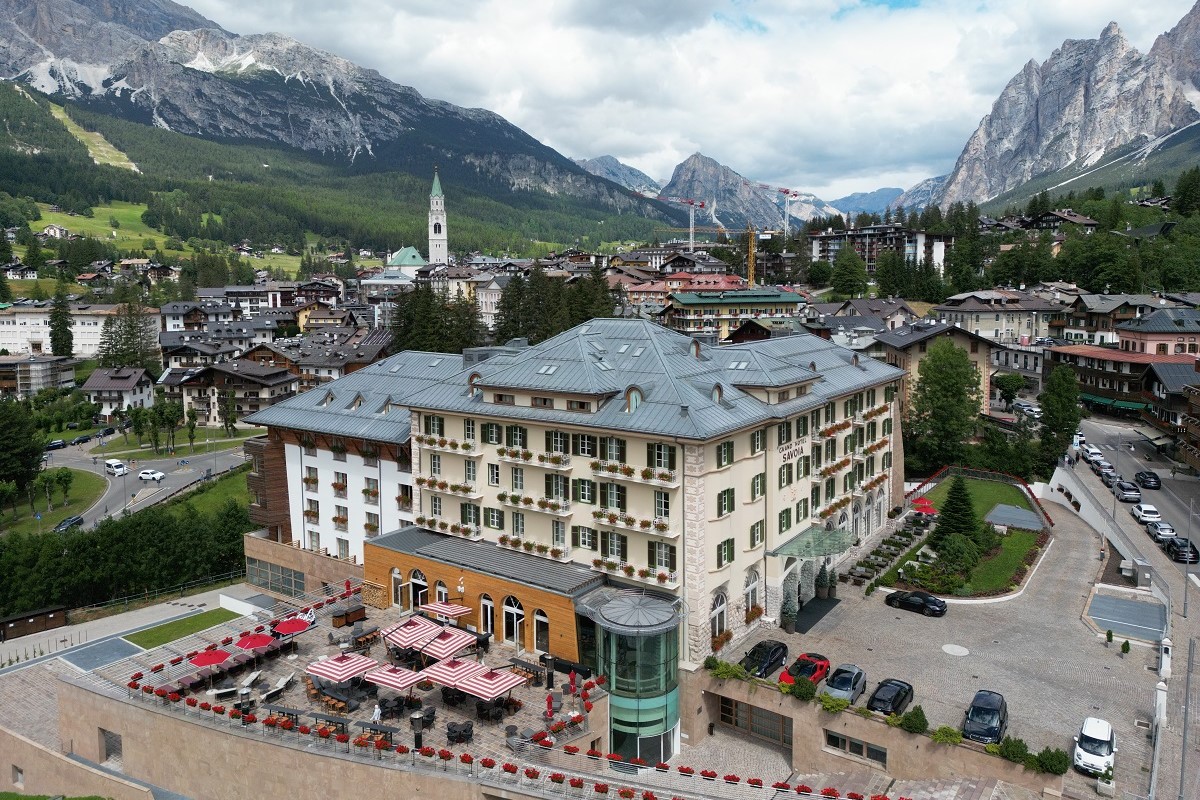
Olympic destination
From December to April, the mountain groupings of Tofane, Cristallo and Faloria form a backdrop of pistes and an arena for skiing and other winter sports, while during the warmer months they offer hiking, trekking, mountain biking and pursuits such as paragliding, with the Grand Hotel Savoia aligning itself with these different sports as the season change.
Cortina d’Ampezzo’s reputation as a ski destination was established during the 1950s when it hosted the 1956 Winter Olympic Games.
Now it is gearing up for a repeat with the 2026 Winter Olympic Games where the resort will host downhill skiing and bobsleigh, sharing events with Milan. (As you take the gondola up Tofane you can see construction of the 2026 bobsleigh run under way).
Distinguished guests
Refurbished in 2019, with décor, colours and furnishings inspired by the Dolomite setting and complemented by modern artwork, the Grand Hotel Savoia is today part of the Radisson Collection having hosted distinguished guests and celebrities including Sophia Loren, Elizabeth Taylor, Ernest Hemingway, Frank Sinatra and Sir Winston Churchill over the years.
It also has an excellent spa with a large indoor pool, jacuzzi, steam rooms, saunas, fitness area and treatment rooms offering a range of therapies.
Massages and bespoke beauty treatments include the 50-minute Aromasoul (aromatherapy rituals for body and mind); and Body Active (intensive sculpting and re-mineralising to boost post-workout effectiveness) as well as face and neck treatments, a salt massage or volcanic scrub.
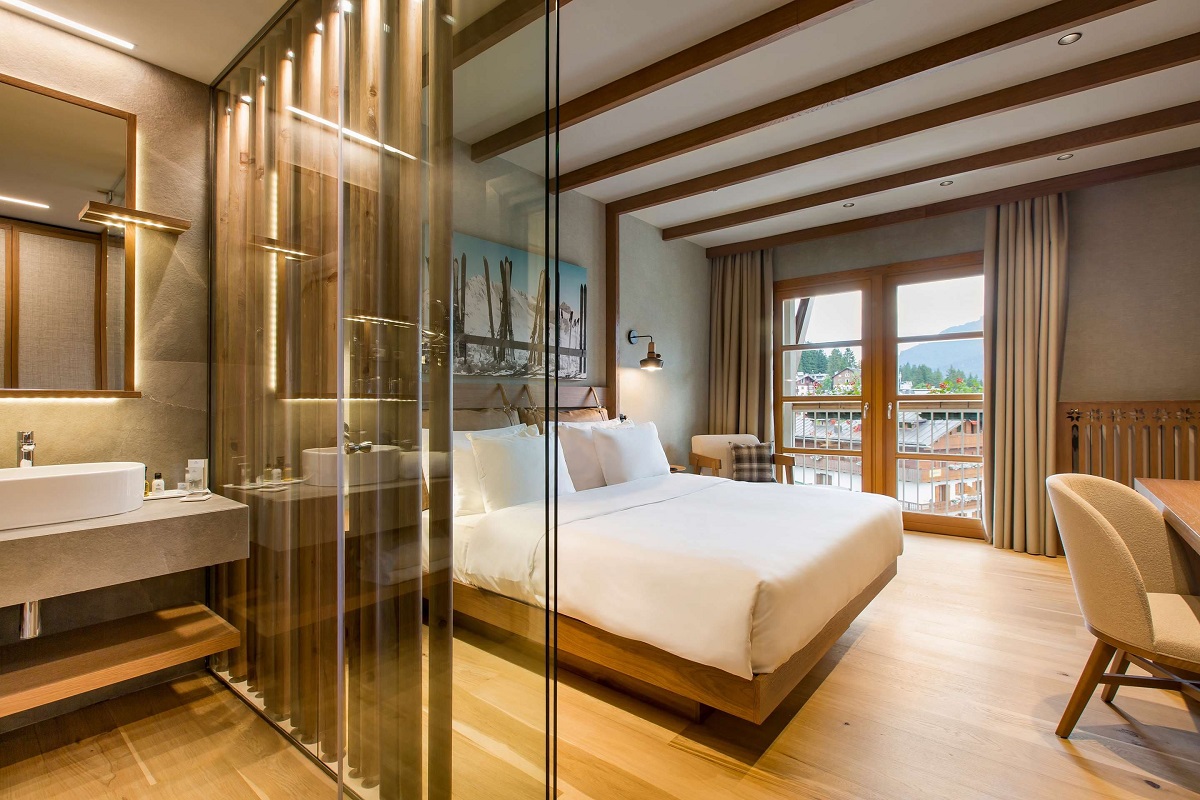
Enticing menu
Dining is at the fore at the hotel and the fabulous Ristorante Savoy has an enticing menu with wines to match.
Created using locally sourced ingredients with meat from the mountains and fish from Venice a couple of hours away, dishes are prepared in the nouvelle gourmet style under the guidance of head chef Luigi Sarsano.
The inspirational menu includes prawns wrapped in bacon, street food selections, lemon linguine with tuna fish tartare and basil coulis, wild boar ragout, duck breast and pear in a cabernet infusion, angus tartare, stuffed tortellino, veal stew and juniper sauce, tuna steak, and lamb and asparagus with carrot mousse.
Meanwhile, the 1224 bar and terrace is the place for a pre-dinner cocktail or to celebrate an exhilarating day in the mountains.
For me, it was a traditional choice of the region, opting for a Hugo, with its elderflower and mint flavours: a perfect way to toast a stunning Italian adventure.
Factbox:
Mark Nicholls stayed at the Palazzo Nani in Venice and the Grand Hotel Savoia in Cortina d’Ampezzo. Both are five-star hotels and part of the Radisson Collection.
For more information visit: Fondaco dei Tedeschi (book through www.dfs.com); Tessitura Luigi Bevilacqua; and The Merchant of Venice.
Mark Nicholls is an award-winning freelance travel writer and author, based in the UK and has written for a range of national titles, specialist magazines and international websites and operated as a war correspondent in locations such as Iraq and Afghanistan.
Photographs by Mark Nicholls


Be the first to comment